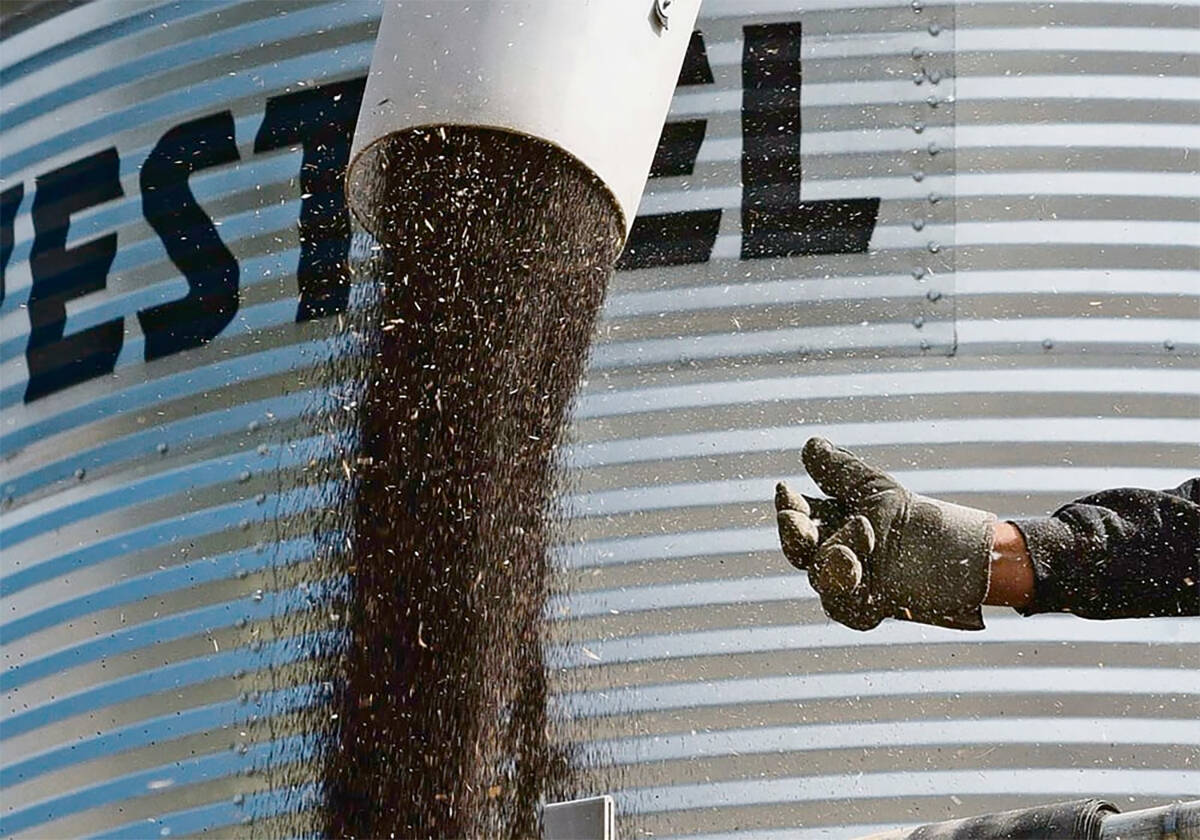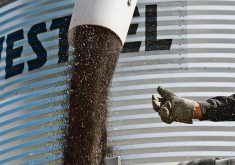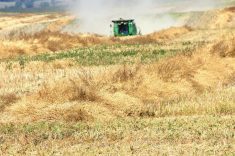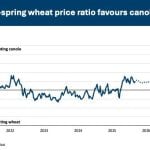Dale Flavel’s decision to stop spraying his crops was not made for business reasons.
But it has turned out to be profitable.
This year, the Silton, Sask., farmer contracted production from 60 acres of organic flax to Bioriginal Food and Science Corp. of Saskatoon for $19 a bushel. Last year, he earned $18.
Flavel is making money, even with a lower yield and the $1 per bushel cost of trucking it to a certified cleaning plant in Leross, Sask.
“It’s really the only way I could make money on the farm,” he said.
Read Also

Farmers urged to be grain-safe this fall
Working around grain bins comes with risk, from farmers falling to drowning in grain: Experts have five tips to help avoid grain-related accidents this harvest.
“With inputs, I was just going backwards.”
The Saskatchewan cash price for regular flax was about $4.95 a bushel last week.
Flavel stopped using chemicals about 15 years ago because his young daughter suffered migraine headaches during spraying season.
“About six or seven years ago we decided we might as well get certified (organic) and get the bonuses,” he said.
For the past three years, he has grown flax.
There are fewer than 100 prairie farmers contracting organic flax to Bioriginal, said Blair McCann, the company’s crop production manager. Most of them are in Saskatchewan.
Bioriginal processes the flax at its facility in Asquith, Sask. There, the seed is pressed and the oil extracted, or it is milled or left as whole flaxseed.
McCann said the demand for milled flax comes largely from research into dietary fibre requirements. The oil is used in the treatment of heart disease, high cholesterol and other ailments.
“The bulk of our stuff is going into the (United) States,” McCann said. Some is sold in Canada and a smaller amount is going to Europe.
He said consumers are driving the business, and farmers are changing their practices to meet the need.
“I think it’s almost a value-added process in itself,” McCann said.
The prices farmers like Flavel receive for organically produced crops are a reflection of this demand and the fact it’s more difficult to grow crops without chemicals, he said. Farmers have to be prepared for lower yields. In the case of flax, yields are 30 to 40 percent lower than conventionally grown crops.
Lower yields don’t concern Flavel. He said most farmers, with an average crop of 20 bushels per acre worth about $6 per bushel, are selling their first eight to 10 bushels to pay for fertilizer and spray.
His yields are between 10 and 15 bushels, but the price is three times higher.
“A lot (of farmers) say the bushels have kept them alive” with prices so low, he said. “It doesn’t matter how many bushels you grow, you’re always a bin short.”
Flavel has six quarters of land, half of which is leased out and not organic. Of the remainder, he leaves about half fallow each year. He is happy with his flax production, but is also interested in trying fall rye or winter wheat for better weed control.
“The trouble with flax is it’s not weed competitive,” he said. “But I see people who spray all the time who have no better weed control.”
He has received calls from American companies looking for organic canola, but said he has too many problems with mustard to try that crop. And, he worries about insects he might have to battle.
Flavel added that farming organically requires different management. For example, he learned to seed later, around June 1, after he was told spraying sets a crop back two or three weeks and his organic crop would be ready for harvest at the same time as others.
Summerfallow must be worked for weed control. The truck that hauls his crop has to be clean, and the neighbors can’t help out with harvest because their combines or augers may contain unacceptable material.
“It’s well worth the time and effort,” Flavel said. “And it’s a challenge to let nature get back to doing her own thing.”
McCann added that most organic systems work better if farmers have livestock and can work a forage rotation into their system.
Flavel has about 40 ewes.
“I guess my sheep would be organic, too,” he said.















